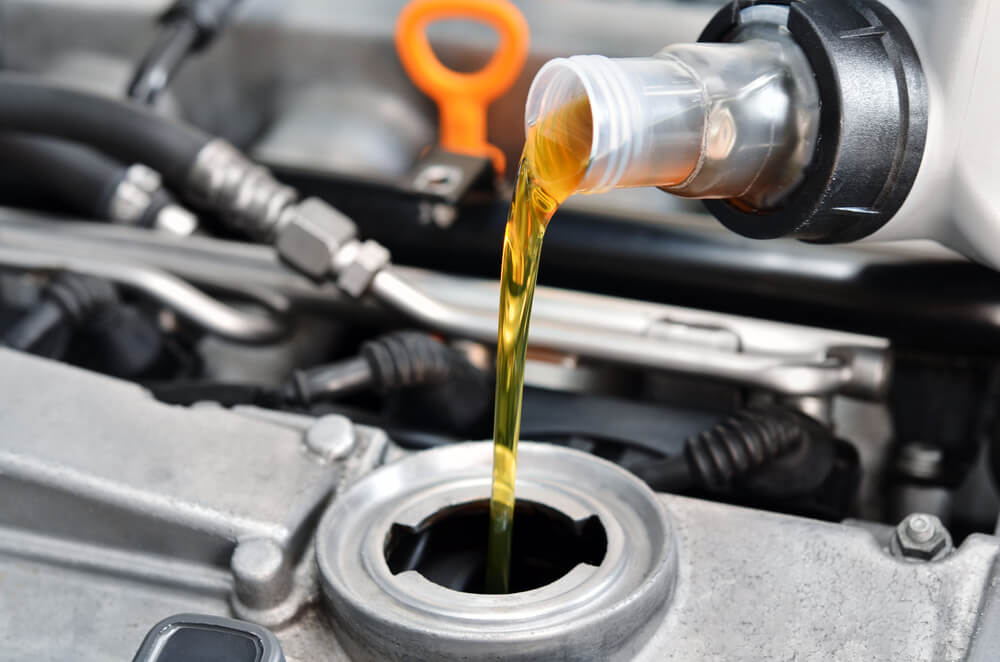Title: “Optimizing Engine Performance: Adding the Right Amount of Motor Oil When Levels are Low”
Introduction
Maintaining optimal engine oil levels is crucial for the health and longevity of your vehicle’s engine. However, knowing precisely how much oil to add when levels are low can be a bit perplexing for many car owners. In this guide, we’ll delve into the essential steps and considerations to help you determine the correct amount of motor oil to add when your engine is running low. By understanding this process, you can ensure that your engine remains well-lubricated and performs at its best, ultimately extending the lifespan of your vehicle and minimizing the risk of costly repairs. Let’s dive in and unlock the secrets to effectively topping up your engine oil levels.
Explanation of why engine oil levels drop
Excessive consumption of engine oil can be concerning, especially when it seems to disappear faster than expected. Several factors contribute to the decline in oil levels and can get the anwser how much to add when engine oil is low.
- Normal Consumption: Engines naturally consume some oil during operation due to the combustion process. As the piston moves up and down, some oil is burned along with the fuel-air mixture. This normal consumption rate varies depending on the engine design, age, and condition.
- Leakage: Oil leaks are a common culprit behind dwindling oil levels. Over time, seals and gaskets can degrade, leading to leaks around the engine. Common areas for leaks include the oil pan gasket, valve cover gasket, and seals around the crankshaft and camshaft.
- Burning Oil: In older or high-mileage engines, worn piston rings or valve guides can allow oil to seep into the combustion chamber, where it burns along with the fuel. This phenomenon, known as oil burning, can result in a noticeable decrease in oil levels between oil changes.
- Incorrect Oil Grade or Type: Using the wrong type or grade of oil can also contribute to oil consumption. Thinner oils may be more prone to burning or leaking, while thicker oils may not flow as freely, leading to increased friction and oil consumption.
- Driving Conditions: Aggressive driving, towing heavy loads, or frequently driving at high speeds can increase oil consumption by placing additional stress on the engine components. Similarly, driving in extreme temperatures, such as excessive heat or cold, can affect oil viscosity and consumption rates.
- Poor Maintenance Practices: Neglecting routine maintenance, such as infrequent oil changes or using low-quality oil filters, can accelerate engine wear and increase oil consumption. Contaminants and debris can accumulate in the oil, reducing its effectiveness and potentially causing damage to engine components.
Understanding these factors can help car owners identify the underlying cause of low oil levels and take appropriate measures to address them. Regular oil checks, timely maintenance, and addressing any leaks or engine issues promptly can help mitigate excessive oil consumption and ensure the longevity and performance of your vehicle’s engine.
Consequences of driving with low oil levels
Driving with low oil levels can have serious consequences for your vehicle’s engine and overall performance. Here’s what you need to know:
- Increased Friction and Wear: Engine oil lubricates moving parts to reduce friction and prevent metal-on-metal contact. When oil levels are low, insufficient lubrication can lead to increased friction and wear on critical engine components, such as the piston rings, bearings, and camshaft. Over time, this can result in premature wear and potential damage to the engine.
- Overheating: Engine oil also helps to dissipate heat generated during the combustion process. Low oil levels reduce the engine’s ability to regulate temperature, leading to overheating. Excessive heat can cause thermal breakdown of the oil, leading to sludge buildup and further reducing lubrication effectiveness. In extreme cases, overheating can cause warping or cracking of engine components, resulting in costly repairs.
- Reduced Engine Performance: Insufficient lubrication can impair engine performance, leading to decreased power output, rough idling, and sluggish acceleration. As friction increases and vital components wear down, the engine may struggle to operate efficiently, resulting in reduced fuel efficiency and overall performance.
- Increased Fuel Consumption: A poorly lubricated engine requires more energy to overcome friction and operate smoothly. As a result, driving with low oil levels can lead to increased fuel consumption as the engine works harder to maintain performance. This not only impacts your wallet at the pump but also contributes to unnecessary emissions and environmental pollution.
- Risk of Engine Failure: Perhaps the most significant consequence of driving with low oil levels is the risk of catastrophic engine failure. Without adequate lubrication, vital engine components can suffer irreversible damage, leading to seized pistons, thrown rods, or complete engine seizure. Repairing or replacing a damaged engine can be prohibitively expensive and may render the vehicle inoperable.
- Safety Hazard: A sudden engine failure due to low oil levels can pose a significant safety hazard, especially if it occurs while driving at high speeds or in heavy traffic. Loss of power steering, braking, or control can increase the risk of accidents and endanger both occupants and other road users.
In summary, driving with low oil levels is not only detrimental to your vehicle’s engine health but also poses safety risks and can result in costly repairs. Regularly checking and maintaining proper oil levels is essential for preserving engine performance, prolonging engine life, and ensuring a safe and smooth driving experience.
Determining How Much Oil to Add
Determining the correct amount of engine oil to add when levels are low is essential for maintaining optimal engine performance and longevity. Here’s a guide to help you add the right amount:
- Check the Oil Level: Start by parking your vehicle on a level surface and allowing the engine to cool down for a few minutes. Locate the oil dipstick, typically marked with a bright-colored handle, and remove it from the engine.
- Wipe and Reinsert the Dipstick: Use a clean cloth or paper towel to wipe the dipstick clean of any oil. Reinsert the dipstick fully back into the engine, ensuring it’s seated securely.
- Check the Oil Level: Withdraw the dipstick again and observe the oil level markings. Most dipsticks have indicators for “full” and “low” levels. The oil should ideally fall between these two marks.
- Interpret the Reading: Take note of the oil level indicated on the dipstick. If the oil level is close to or below the “low” mark, it’s time to add oil.
- Refer to the Owner’s Manual: Consult your vehicle’s owner’s manual to determine the recommended type and viscosity of oil for your engine. Additionally, the manual may provide guidance on the appropriate oil capacity for your specific vehicle model.
- Add Oil in Small Increments: Using a funnel to avoid spills, add a small amount of oil to the engine. It’s crucial to add oil gradually and recheck the oil level frequently to avoid overfilling.
- Recheck the Oil Level: After adding oil, wait a few moments for it to settle in the engine. Then, repeat the process of removing, wiping, and reinserting the dipstick to check the oil level.
- Adjust as Needed: Continue adding oil in small increments until the oil level reaches the “full” mark on the dipstick. Be cautious not to overfill the engine, as excess oil can lead to foaming, reduced lubrication effectiveness, and potential engine damage.
- Secure the Dipstick and Close the Hood: Once the oil level is at the appropriate level, securely reinsert the dipstick into the engine. Ensure the oil filler cap is tightened properly, and close the hood of your vehicle.
By following these steps and exercising caution, you can accurately determine how much engine oil to add and ensure your engine remains properly lubricated for optimal performance and longevity. Regularly checking and maintaining proper oil levels is key to preserving your vehicle’s engine and avoiding costly repairs down the road.
Adding oil safely
Adding oil to your vehicle’s engine is a straightforward task, but it’s essential to do it safely and correctly to avoid spills, contamination, or overfilling. Here are some optimized steps to ensure safe oil addition:
- Prepare the Area: Park your vehicle on a level surface and engage the parking brake to prevent any movement. Ensure you have enough space around the engine bay to work comfortably. It’s also a good idea to lay down a clean rag or newspaper to catch any spills.
- Choose the Right Oil: Refer to your vehicle’s owner’s manual to determine the recommended type and viscosity of oil for your engine. Using the wrong type of oil can affect engine performance and longevity. Ensure the oil meets the required specifications for your vehicle.
- Gather Necessary Tools: Have all the tools and supplies you’ll need on hand, including a funnel, a clean cloth or paper towel for wiping, and a container to dispose of any used oil.
- Locate the Oil Fill Cap: Open the hood of your vehicle and locate the oil fill cap. It’s usually marked with the words “Engine Oil” or a small oil can icon. Remove the oil fill cap by twisting it counterclockwise and set it aside in a safe place.
- Add Oil Gradually: Insert a funnel into the oil fill opening to prevent spills. Pour the recommended amount of oil into the funnel, but be cautious not to overfill. It’s better to add oil gradually and check the oil level frequently to ensure you don’t exceed the maximum capacity.
- Check the Oil Level: After adding oil, wait a few moments for it to settle in the engine. Use the dipstick to check the oil level and ensure it falls within the appropriate range. If necessary, add more oil in small increments until the level reaches the recommended mark.
- Secure the Oil Fill Cap: Once you’ve reached the correct oil level, carefully remove the funnel from the oil fill opening. Wipe any spilled oil from the area with a clean cloth or paper towel. Replace the oil fill cap by twisting it clockwise until it’s snugly secured.
- Dispose of Used Oil Properly: If you’ve drained any used oil during an oil change, be sure to dispose of it properly at a designated recycling center or automotive service facility. Avoid pouring used oil down the drain or onto the ground, as it can harm the environment.
By following these steps, you can safely add oil to your vehicle’s engine and ensure it remains properly lubricated for optimal performance and longevity. Regular oil checks and maintenance are essential for keeping your engine running smoothly and avoiding costly repairs.
Tips for Maintaining Proper Oil Levels
Maintaining proper motor oil levels is crucial for the health and longevity of your vehicle’s engine. Here are some optimized tips to help you ensure your oil levels stay where they should be:
- Follow the Manufacturer’s Recommendations: Refer to your vehicle’s owner’s manual for guidance on the recommended oil type, viscosity, and change intervals. Adhering to these recommendations will help maintain optimal engine performance and longevity.
- Check the Oil Regularly: Get into the habit of checking your oil level regularly, ideally every month or before long trips. Park your vehicle on a level surface and wait for the engine to cool down before checking the oil using the dipstick. If the oil level is low, add the appropriate amount of oil to bring it to the recommended level.
- Monitor for Leaks: Keep an eye out for signs of oil leaks around your vehicle, such as puddles or stains on the ground where you park. Addressing any leaks promptly can prevent excessive oil loss and potential engine damage.
- Inspect the Oil Quality: In addition to checking the oil level, inspect the quality of the oil periodically. Clean, amber-colored oil indicates that it’s in good condition, while dark or gritty oil may be contaminated or overdue for a change. If the oil appears dirty or degraded, it’s time for an oil change.
- Follow a Regular Maintenance Schedule: Stick to a regular maintenance schedule for your vehicle, including routine oil changes. Regular oil changes help remove contaminants and replenish additives that protect your engine from wear and tear.
- Use the Right Oil: Ensure you’re using the correct type and viscosity of oil for your vehicle’s engine. Using the wrong oil can affect engine performance and longevity. Refer to your owner’s manual for guidance, especially if you live in an area with extreme temperatures or driving conditions.
- Avoid Overfilling: Adding too much oil can be just as harmful as driving with low oil levels. Follow the dipstick readings and add oil gradually to avoid overfilling. Check the oil level frequently while adding oil to ensure you don’t exceed the maximum capacity.
- Address Oil Consumption Issues: If you notice excessive oil consumption between oil changes, investigate the underlying cause. Common causes include worn piston rings, valve seals, or leaks. Addressing these issues promptly can prevent further damage to your engine.
By following these tips and staying proactive about maintaining proper motor oil levels, you can ensure your engine remains well-lubricated, protected, and performing at its best for miles to come.
Conclusion
In conclusion, maintaining the right amount of oil in your vehicle’s engine is crucial for optimal performance and longevity. Knowing how much oil to add when levels are low is a fundamental aspect of responsible vehicle ownership. By following the recommended procedures outlined in this guide, such as checking the oil level regularly, using the correct type and viscosity of oil, and adding oil gradually to avoid overfilling, you can ensure that your engine remains well-lubricated and protected against wear and tear.
Remember, proper oil maintenance is not just about topping up when levels are low; it’s also about monitoring for leaks, inspecting oil quality, and following a regular maintenance schedule. By staying proactive and attentive to your vehicle’s oil needs, you can prevent costly engine damage and enjoy a smooth, reliable driving experience for years to come.
Ultimately, the goal is to keep your engine running smoothly and efficiently, and maintaining proper oil levels is a fundamental step in achieving that goal. So, whether you’re adding a quart to top up low levels or performing a routine oil change, prioritize your engine’s health by ensuring it always has the right amount of oil. Your vehicle will thank you with reliable performance and longevity on the road.
Useful link
https://www.dairylandinsurance.com/resources/how-to-put-oil-in-car
FAQs about Adding Motor Oil When Levels are Low
How do I know if my engine oil is low?
- You can check your engine oil level by using the dipstick. Park your vehicle on a level surface, wait for the engine to cool down, then remove the dipstick, wipe it clean, reinsert it, and check the oil level markings.
2. How much oil should I add if the level is low?
- The amount of oil to add depends on how low the oil level is and your vehicle’s specifications. Refer to your owner’s manual for the recommended oil capacity and type for your engine.
3. Can I add too much oil to my engine?
- Yes, overfilling your engine with oil can cause damage. It’s important to add oil gradually, checking the dipstick frequently to avoid exceeding the maximum oil capacity.
4. What happens if I drive with low oil levels?
- Driving with low oil levels can lead to increased friction, overheating, reduced engine performance, and potential engine damage. It’s crucial to address low oil levels promptly to prevent costly repairs.
5. How often should I check my engine oil level?
- It’s recommended to check your engine oil level at least once a month or before long trips. Regular oil checks help ensure that your engine remains properly lubricated and protected.
6. Can I mix different brands or types of oil when topping up?
- It’s best to stick with the same brand and type of oil that is already in your engine. Mixing different oils can affect performance and may not provide the desired level of protection.
7. What should I do if I notice a significant drop in oil level between oil changes?
- If you notice a significant drop in oil level between oil changes, it’s important to investigate the cause. Check for leaks, inspect the oil quality, and consider consulting a mechanic if the issue persists.
8. How long does it take for oil to circulate after adding it to the engine?
- After adding oil to the engine, it typically takes a few moments for it to circulate and settle. It’s a good idea to wait a minute or two before rechecking the oil level to ensure an accurate reading.
9. Can I use engine oil additives instead of adding more oil?
- While some engine oil additives claim to improve lubrication and performance, it’s generally best to stick with adding the recommended amount of oil. Engine oil additives may not provide the same level of protection as adding oil directly to the engine.
10. What should I do with the used oil after topping up my engine?
- Used engine oil should be disposed of properly at a designated recycling center or automotive service facility. Avoid pouring used oil down the drain or onto the ground, as it can harm the environment.




Leave a Reply